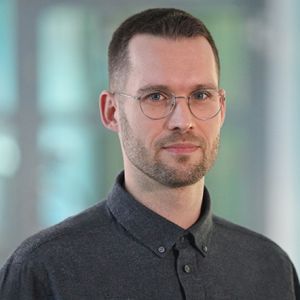Digital peatland valuation
With a peatland monitor, Moormonitor in German, product designer and peatland fan Milan Bergheim and his colleagues in the Valpeats project are developing an economical and practical monitoring system, primarily to record and quantify the ecosystem values of rewetted areas. His aim is to help rewet and utilise peatlands more quickly and on a larger scale.

Flying over peatland with drones - that's not supposed to provide you with pretty pictures, but what exactly?
We are working on using a monitoring system based on the GEST approach to record the vegetation on peatlands and thus to be able to evaluate emissions generated there. This provides a basis for considering how much CO2 could be avoided by rewetting of a certain area and potentially be issued in certificates on the voluntary carbon market. The drone is just one component of the Moormonitor being developed by our Valpeats project team from the Fraunhofer Institute for Computer Graphics Research IGD and the University of Greifswald in a multilayer approach. It also includes an entire sensor network that records data in real time on the ground and gathers it in a cloud, e.g. weather data, water levels and soil temperature.
Are there other advantages?
The peatland monitor enables the success of rewetting measures on large areas to be monitored in a short space of time. It supports botanists and hydrologists who have to map a certain area or check water levels on site. If 50,000 hectares are to be rewetted every year by 2045, this cannot be achieved with existing specialists. The Moormonitor also provides information on biodiversity. For example, it recognises species on the Red List and this information is a co-benefit for certificates, similar to properties for water retention or fire prevention.
Why should farmers in particular be interested in the peatland monitor? The system not only records the initial state, but also provides continuous data on developments after rewetting. In terms of ‘smart farming’, the farmer could thus see where things are not going well and adapt his measures accordingly. He would know the exact composition of his biomass, could label it with precise details at harvest and sell it for a specific utilisation, whether fodder, packaging or energy. And of course, he can document and quantify the value of his land for eco-papers or voluntary carbon certificates.
As a product designer, how did you come up with the peatland monitor?
As a student, I couldn't believe that peatlands can burn. I had read up on it at the time and realised that despite the findings in favour of rewetting, little was happening. In my Master's degree, I looked into technical solutions. I then developed a concept for a monitoring solutions and service and tried founding a company. Unfortunately, I realised that there was still a great need for research and development. This is exactly what we can now cover with the five-member Valpeats team: a biogeochemist – also in charge of scientific coordination - deals with GHG fluxes, an environmental scientist with hydrologic modelling, we have an expert inartificial intelligence and a landscape ecologist with botanical expertise.
How do you envisage your work in a few years' time?
The best-case scenario is that we bring the Moormonitor to market maturity, many interested parties request the service for their wetland areas and receive money for the ecosystem services generated on them. More likely than individual farmers planning offices or project developers are to buy the Moormonitor or a licence for its software. We are considering founding a start-up and offering the monitoring as a service. That way we could contribute to something meaningful.
Of course, all of our work doesn't help if other things don't develop, if rewetting lasts years, if countless experts’ reports are required and the market doesn't get off the ground. But - I am rather optimistic!
Milan Bergheim coordinates the user-centred development of digital products in the Valpeats project.
More information:
Project Valpeats
Project re:wet
The interview was conducted by Nina Körner











